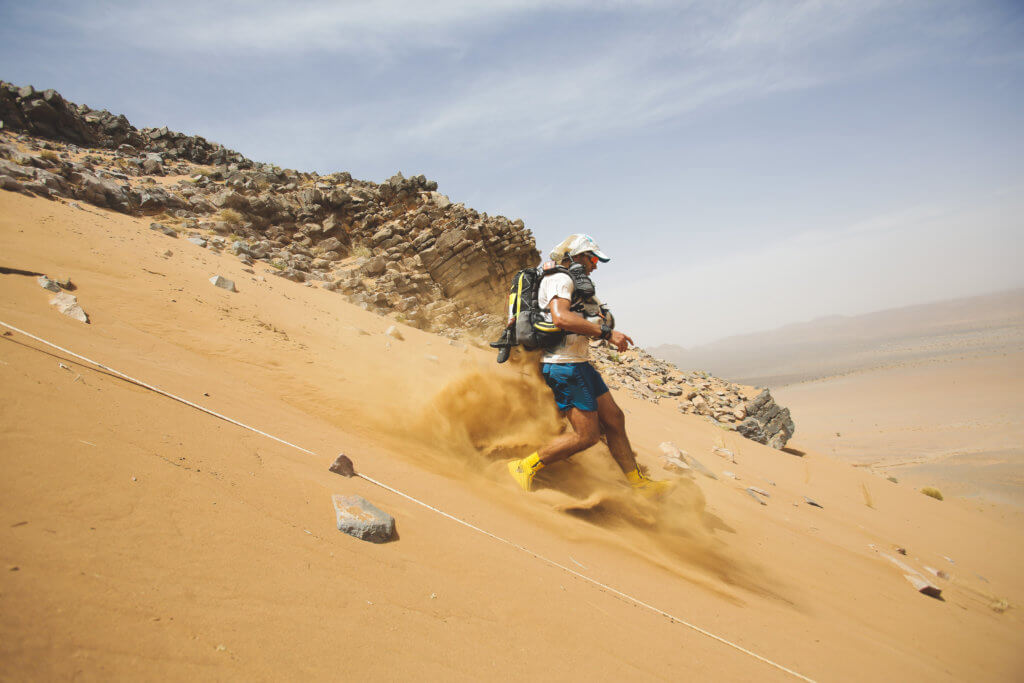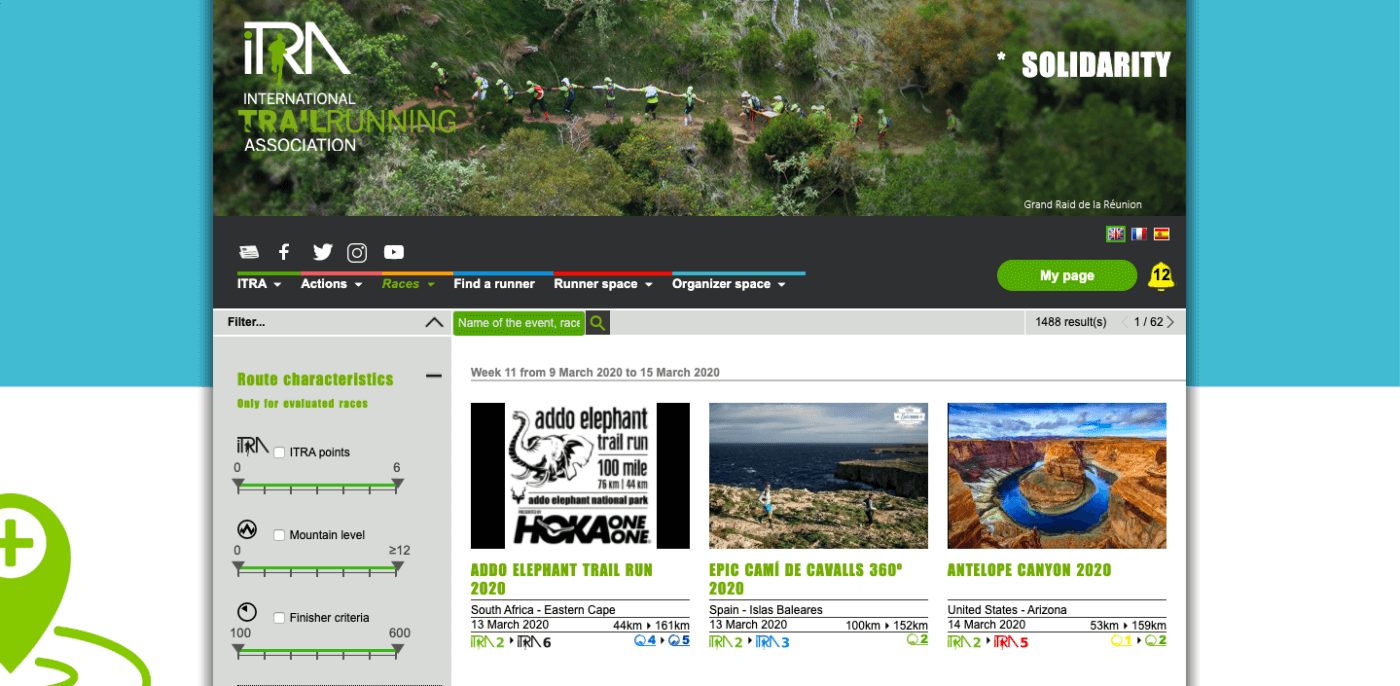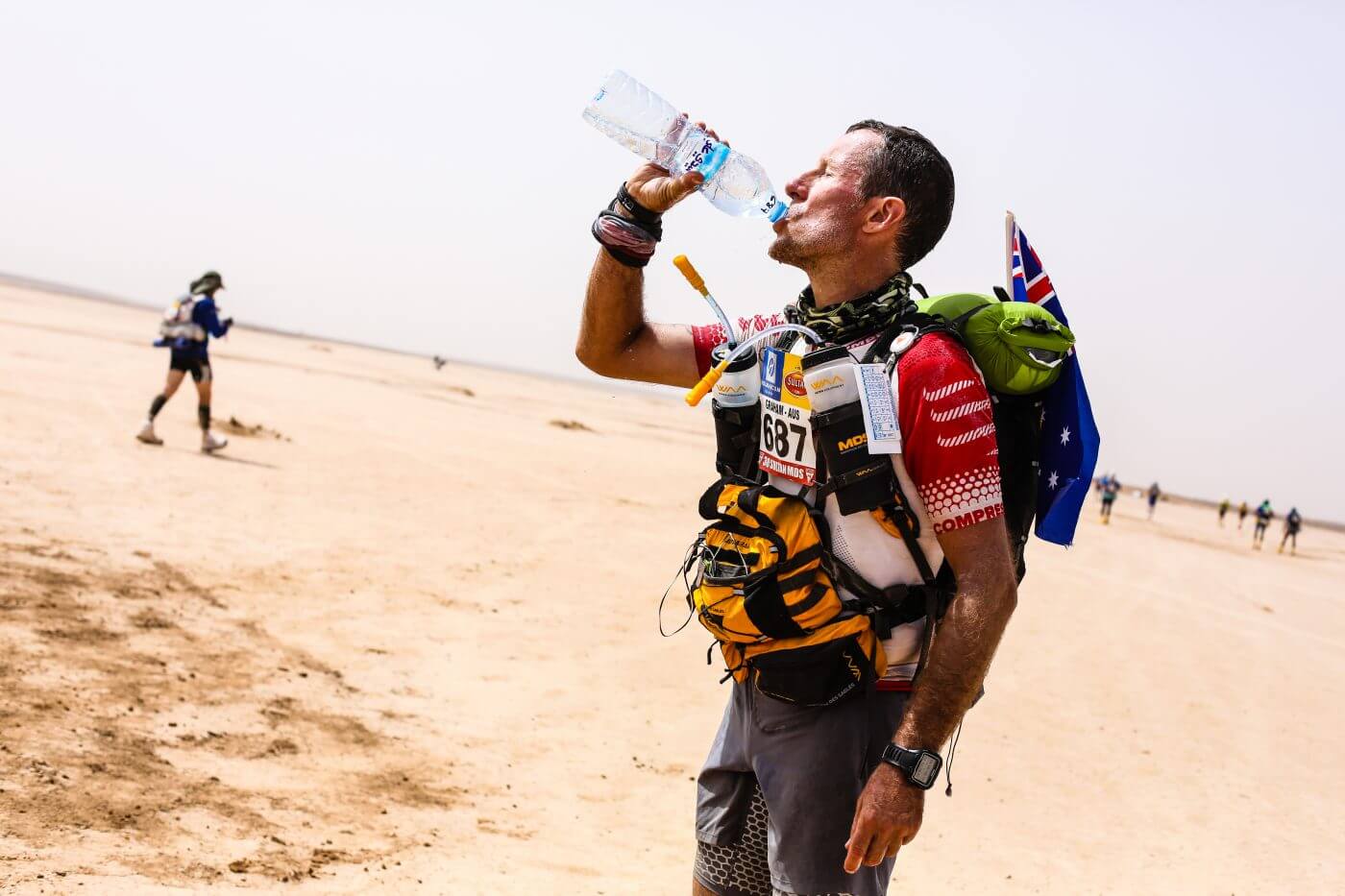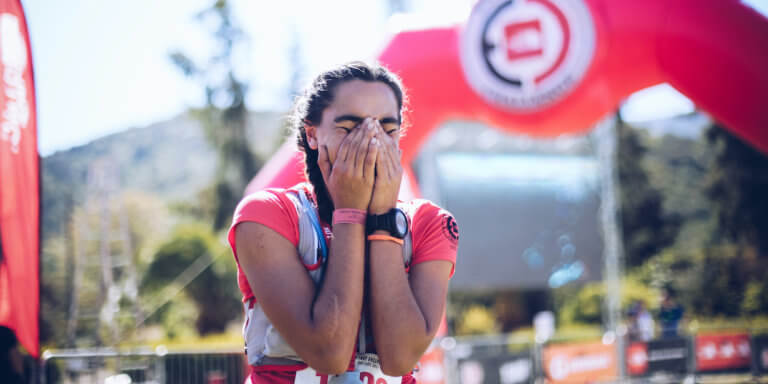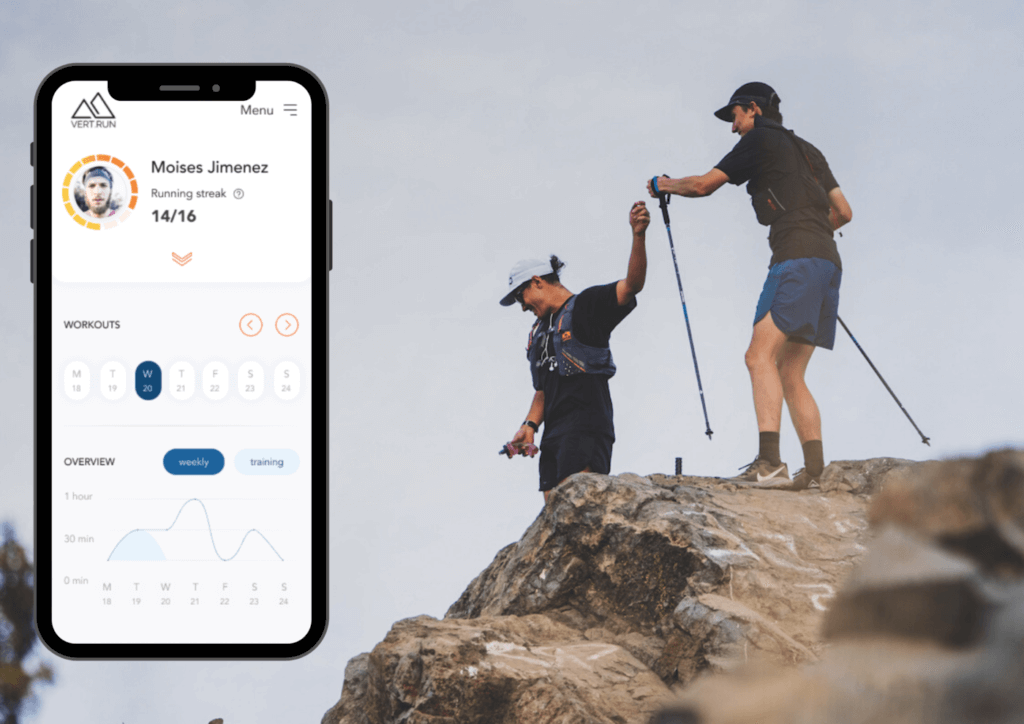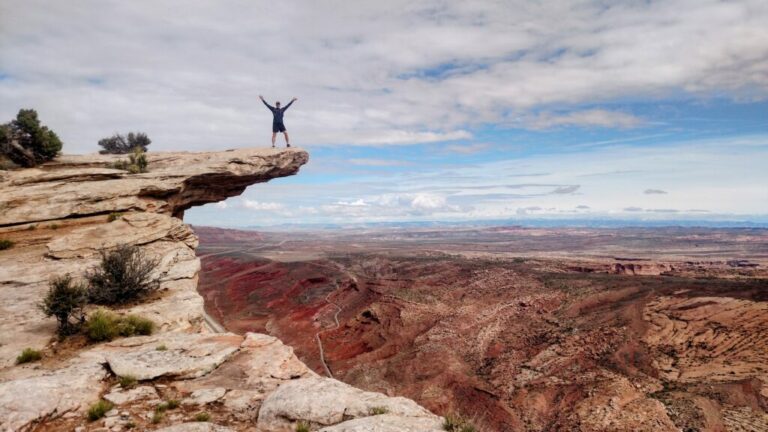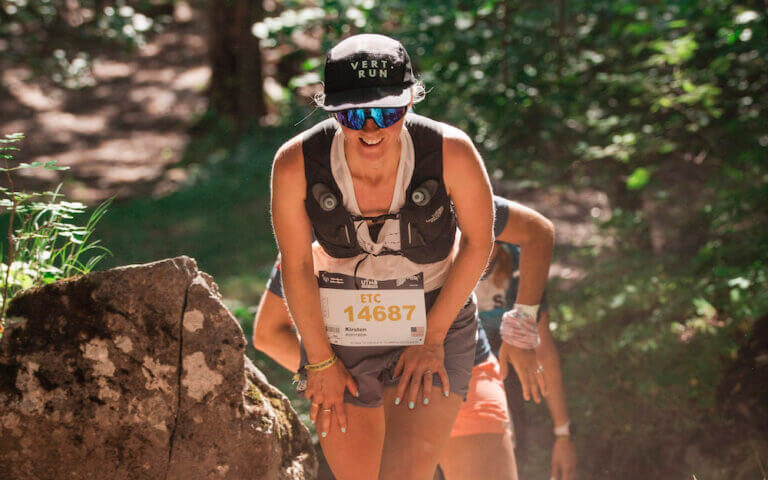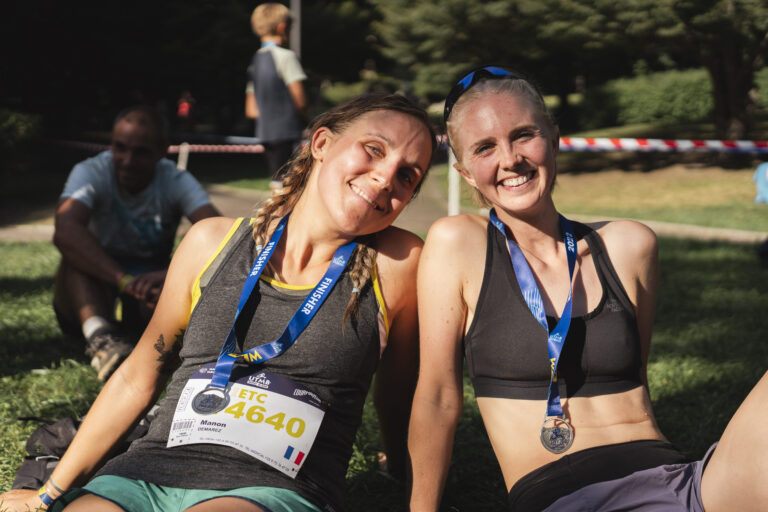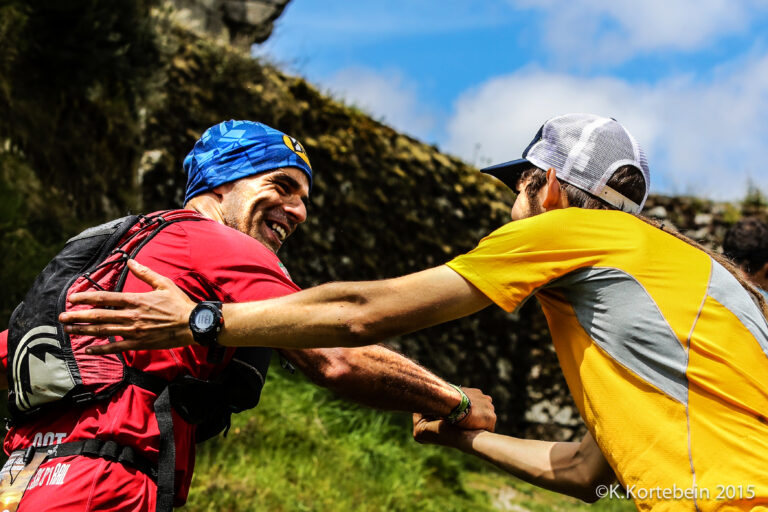What’s an Ultramarathon?
Introduction to Ultramarathon: What used to be a “niche” sport has become widely practiced throughout the past decade. On one hand, this might seem surprising—after all, ultrarunning involves running distances longer than a marathon. But on the other hand, it makes complete sense because of one thing: the simplicity of the sport itself.
(Something that’s growing especially fast: the number of people who want to run their first Ultramarathon.)
An ultramarathon doesn’t have a huge number of “requirements” compared to traditional marathon running–that’s part of what makes them so magical, and so different.
Types of Ultramarathons
Unlike in road marathons (where the general rule of thumb is that “the flatter the course, the better”) ultramarathons can take place in awesome places and conditions like mountainous terrain; sandy deserts; or in hard rain, snow, or intense heat.
Defining Ultramarathons
Technically speaking, an ultramarathon could take place anywhere you are, actually–if you were to go out and run 43 kilometers (27 miles) right now, you’ll have run an ultra. That’s not exactly the spirit of Ultrarunning, but you get the idea.
Training for Ultramarathons
(Want to train for your first ultramarathon? Check out this popular Vert.run Training plan.) Note: 50k is just about 31 miles, something that for sure you can run.
Understanding Ultramarathon Distances
If you’re looking for a technical definition of ultrarunning, here’s what wikipedia has to say:
”There are two types of ultramarathon events: those that cover a specified distance or route; and those that last for a predetermined period of time (with the winner covering the most distance in that time). The most common distances are 50 kilometres (31.069 mi), 100 kilometres (62.137 mi), 50 miles (80.4672 km), and 100 miles (160.9344 km), although many races have other distances. The 100 kilometers is recognized as an official world record event by the International Association of Athletics Federations (IAAF), the world governing body of track and field.[1]”
Ultramarathon Growth and Participation
So basically, you can measure an Ultramarathon either by time or distance. But, if a race is measured in hours, the distance should still always be greater than that of a marathon (26.2 miles.)
The growth of ultrarunning has resulted in the growth of ultraracing. Year after year, more races start and grow worldwide. The International Association of Ultrarunning (ITRA for short) and RunRepeat created a report in 2019 that can help us understand exactly how much the sport has grown and changed throughout the last decades.
Here are some of the report’s main points:
Participation has increased by 1676% in the last 23 years from 34,401 to 611,098 yearly participations and 345% in the last 10 years from 137,234 to 611,098. There have never been more ultrarunners.
- More ultra runners are competing in multiple events per year. In 1996, only 14% of runners participated in multiple races a year, now 41% of participants run more than one event per year. There is also a significant increase in the % of people who run 2 races a year, 17.2% (from 7.7% to 24.9%) and 3 races, 6.7% (from 2.8% to 9.5%).
- There have never been more women in ultrarunning. 23% of participants are female, compared to just 14% 23 years ago.
- Runners improve their pace in their first 20 races, and then their pace stabilizes. From their first to their second race runners improve by 0:17 min/mile (2%) on average. But by their 20th they improve by 1:45 min/mile (12.3%).
- The average age of ultra runners has decreased by 1 year in the last 10 years. It has changed from 43.3 years to 42.3 years.
- Ultra runners are getting more engaged – the average number of ultras per year has increased from 1.3 to 1.7 over the last 23 years.
Now that you’ve got some solid background info about ultrarunning and ultramarathons, let’s get to the race calendar.
Where or how can I find an ultramarathon to run? How should I choose an ultramarathon? What are the toughest ultramarathons in the world?
These are some of the most common questions–so we’ll do our best to answer all of them for you, as in-depth as possible.
The Ultramarathon Calendar
Remember ITRA, the International trail running association that we mentioned earlier? As you might guess from their name, ITRA is trail running’s association.
On their website, they have a really comprehensive list of trail running, mountain running and ultramarathon races, from 50km to hundreds of miles, covering the classic distances like 50miles and 100miles . You can search by date, region, continent, distance, and/or difficulty.
We totally recommend the races that you find on the ITRA site: since they’ve been approved by the association, they’re credible.
For $6/week
+ Ultramarathon Calendar
If you live or want to race in the USA, the best place to find ultramarathon races will probably be ultrasignup. They have a great search feature, and you can sign up for your race right there on the Ultrasignup website.
The only thing is that the races on Ultrasignup are mostly focused on races in the USA (and sometimes Canada.)
Another place to find good races is with the Trail Sisters search feature, where they’ve even got some Trail Sisters-approved races (very cool.) Basically, a trail race that’s been
“Trail Sisters Approved” has: “equal podium spots, equal prize money + awards, women’s specific swag + apparel, menstrual products at aid stations, and equal opportunity/space for women on the starting line.” (Quoted from trailsisters.net.)
And as we talked about earlier, there have never been more women in the ultrarunning community than there are right now–so this race search feature is extra awesome.
(Also here at Vert.run, we are really proud to have training plans designed in collaboration with the strongest female ultrarunners in the world–train like Ruth Croft (Western States winner), Lucy Bartholomew, Hillary Allen, or Grayson Murphy with Vert.run.
How should I choose an Ultramarathon?
Choosing the Right Ultramarathon
So. Now that you know where to find races, it’s time to talk about the next big question:
how the heck do you choose the right one?
And beyond that: if you’re planning to run multiple races, what’s the best way to design your own race calendar for the year?
These are really good questions, and the answer to both is simple: in ultrarunning and ultramarathons, less is more!
Why? Well, ultrarunning is a very demanding sport–physically and mentally. Each race drains significant energy, and requires specific, thorough preparation. So, it’s important to play it safe and to avoid overtraining and over-racing.
If your goal is to run your first ultramarathon, we recommend that you focus just on that: training, planning for and completing just that one, first ultramarathon.
Planning Your Ultramarathon Training
But if you’re more experienced and want to plan a whole season, we recommend that you follow these two guidelines:
firstly, start by increasing your race distance gradually throughout your calendar.
And secondly, leave at least 6 weeks between races.
Let’s do some example math to show you why it’s important to leave 6 weeks between races. Let’s say you’re planning to run a 50k and then a 50 mile ultramarathon race this season.
First, you’ll need to train for at least 10-12 weeks for your 50k in order to run the race safe and strong.
Then, after your 50k, you’ll need to spend at least two weeks recovering. (Recovering does not mean resting–while recovering, you should still be active and continue training–but you’ll need to focus specifically on recovering your energy and strength for at least two weeks after your 50k race.)
Then, after these two weeks are over, you’ll be able to spend another two weeks training normally for your 80k–leaving you just enough time to spend two weeks tapering for your 50 miler.
2 weeks + 2 weeks + 2 weeks = 6 weeks, which is why it’s important to leave a minimum of 6 weeks between your season’s races.
Training Safely with Vert.run: Avoiding Overtraining and Ensuring Recovery
(Or, you could just train with Vert.run and let your personal Vert.run coach work out all the logistics so that you can focus on the part that matters…enjoying being out on the trails!)
Anyway–physically speaking, you could probably run ultra after ultra and barely rest between them. Technically, you could do this for a year or two–maybe. But this isn’t safe, won’t be sustainable, and will very quickly reduce your chances of running for a lifetime.
It might sound harsh, but at Vert.run we really, strongly believe in educating people about the danger of overtraining. It would be such a shame for you to fall in love with ultramarathons, only to burn out after a year or two of racing.
Remember: when it comes to ultramarathons, less is more.
So, when choosing your races for the year, always keep in mind that you’ll need: at least 2 weeks to taper before the race (to recover from your training), and you’ll need 2-3 weeks of recovery after the race itself. To give you an example:
After I ran UTMB in 2019 (a 100 mile race in the Alps,) I spent 3 full weeks without running a single step. I biked, swam, and did a lot of other things–but by staying away from running for nearly a month, I was able to recharge both mentally and physically (remember that an ultramarathon is 50% mental!) After those recovery weeks, I felt ready to start running again.
The toughest Ultramarathon races
Everybody loves to ask which ultramarathons are the hardest–and with good reason. Running an ultramarathon is already a huge challenge: it requires significant focus, effort and training. But in the Ultrarunning world, there are indeed some races that are tougher than others.
Here are 4 of the hardest Ultramarathon races:
(It is worth noting that this is pretty subjective since everyone’s definition of “tough” is relative.) I’m sure there are plenty of other ultras that are wildly hard that I haven’t even ever heard about. If we’re missing a race that you think is harder than these, leave a comment and help us learn! We’ll add it in.
Badwater Ultramarathon
Badwater was born in the mid ‘70’s–and over time, it’s just become harder. Now, it’s widely recognized as one of the hardest ultramarathon races in the world.
This 135-mile course through Death Valley (the place with the highest temperatures in the USA) takes place annualy in July–yep, the hottest month. This race basically starts at the lowest point in North America and finishes on Mount Whitney, meaning 13,000 feet of elevation gain for racers. At least when the racers head up in altitude, the temperature should (theoretically) drop with each mile. Badwater is not a stage race, which means that it’s non-stop.
Hardrock 100
In contrast to Badwater, Hardrock starts and takes place entirely in a high-altitude environment. This is the main challenge of this 100-mile race, which starts and finishes in Silverton, Colorado. Hardrock is one of the most competitive, scenic, and challenging ultramarathons on the planet.
Racers must navigate and tag peaks in the San Juan mountain range for between 24 and 41 hours to complete the race. But the hardest thing about Hardrock? Getting a coveted lottery spot in this hard-to-enter race.
HURT 100
Hawaii–ah, what a great place. It’s got the sea, endless waves, lush vegetation, lots of fruit… and the HURT 100. This 100 mile ultramarathon–which boasts close to 25,000 feet of elevation gain–takes place on technical, unfriendly terrain. During this race, runners cross the mountains of Honolulu on single track trail…full of roots, mosquitos, and endless stream-crossings. Plus, this all takes place in the jungle–so humidity and high temps are pretty much a given.
Tor des Geants
The TOR! We love this race. The spirit, ambiance and whole scene of the Tor de Geants make this race extra-magical. The concept is very simple: you run/hike down the Valley of Aosta using the Via Alta n2, and then come back up to Aosta using the Via Alta n1.
What are these two routes? The Via Alta is a trail that Italians have made over the decades, which crosses amazing mountains and runs through their highest peaks and passes (it includes 25 mountain passes over 7,000 feet). The TOR is a non-stop, 200-mile race with 82,000 feet of elevation gain. The first finishers generally take about 67-70 hours to complete the race, and the maximum time limit time is about 150 hours.
Ultra Trail Du Mont Blanc (UTMB).
UTMB is, without a doubt, one of the hardest and most competitive races in the world. This 170km / 100 mile ultramarathon, which has 10,000 meters of elevation gain, consist in a loop around the Massif du Mont Blanc, a route that takes around 10 days for hikers but that runners can do on around 20hours with a one push effort.
This race takes place in Chamonix and passes trough 3 countries (France, Italy and Switzerland).
Can I run an ultramarathon? Can I finish it? How?
Now we’ve walked through what an ultramarathon is, it should be easier to understand that there’s a huge variety in types, distance and difficulty of ultra races. So, the biggest question is: can you finish an ultramarathon?
Of course you can! I’m not talking about running the Tor de Geants next week, let’s take things one step at a time–but if you focus on choosing a tangible, realistic ultramarathon (and train correctly and safely) you can absolutely finish an ultramarathon.
As I said above, the first thing is to define your goal. When choosing your first ultramarathon, we recommend a 50k. It’s a great distance, a very cool challenge and it’s a great starting race. With the right training plan and preparation, you can be ready to run your first 50k within 3-4 months.
The most important thing is that you follow a structured, efficient training plan and that you commit to making your goal happen.
The real secret to finishing an ultramarathon is to be consistent in your training. Consistency isn’t the most exciting or “sexy” part of training–but it’s definitely the most important. At the end of the day, finishing an ultramarathon is just about learning to train, eat, and recover consistently and correctly.
[Want to become an Ultrarunner? Run your first 50k with our popular Vert.run Training Program: “Become an Ultrarunner”! We’ve helped 100s of runners from around the world earn the title of Ultrarunner with this great training program, which includes weekly check-ins from a real, human coach!]
Race Day Preparation: Course Study and Energy Management
Finally, before you run your race, it’s important that you study the race’s course beforehand. This way, you can correctly calculate your running pace–and decide in advance where you’ll run and where you’ll power hike or walk to maximize your energy.
Heading into the race with a game plan will help you be more prepared and more confident on race day. If you need help planning this, you can check out our popular 50k training plans–our coaches will help you plan out this type of stuff. (Otherwise, a private coach is always a good option if you can afford one.)
Want some more in-depth info–specifically about training for a 50k? Here’s our Ultimate 50k Guide.
What gear/equipment do I need to run an ultramarathon?
Essential Gear for Ultramarathons
To keep it simple, the main things you’ll need to train for and run an ultramarathon are: shoes, a backpack and appropriate clothing for the temperature and length of your race. The latter of these is the most important, so we’ll talk first about choosing appropriate clothing for your race.
Choosing appropriate clothing:
One of the main things that’s different when choosing what to wear for an ultramarathon vs. a normal road marathon is that the temperatures and conditions can change drastically throughout the course of a race–especially if you change elevation throughout.
In Western States, for example, temperatures can be as low as 30 degrees Fahrenheit at some points…but at others, it can reach 100+ degrees.
It’s important to be prepared clothing-wise for changing temperature conditions during an ultra.
Tips for Race Day Preparation
If your race will be happening entirely in a cold environment or during a cold month of the year, we really encourage you to prepare gear-wise for the worst conditions. Don’t try to get by with the lightest or cheapest jacket you can find. Taking your safety seriously is important–if you’re able to pay for the race bib, you should make it a priority to have a jacket that will protect you correctly from the elements.
We’re not trying to scare you, but respecting the mountains and extreme conditions is really important–even in a controlled situation like a race, conditions can get tough quickly. It’s not worth risking your health or life just to save a few bucks by buying flimsy gear.
Also: if you could use some more personalized advice about what gear to use, feel free to shoot us an email (team@vert.run.) We’ll be happy to help.
Choosing a Mountain trail running backpack:
Theoretically, any backpack could work for a trail race–but if you’ve got the budget for it, it’s a good idea to choose a running backpack. This will make it easy to store the food, water, other gear, and mandatory equipment for your race.
(If you want more advice about gear and nutrition for ultramarathons, here’s a great article and interview with our Vert.run coaches.)
There are tons of options out there, but the most important is that you race with a backpack which you feel comfortable in. It’s never a good idea to try something new on race day, so make sure that the backpack you’ll use in your race is one that you’ve tested multiple times during your training–ideally during your long runs.
Make sure that your backpack allows you to easily access your water and race nutrition (like gels,) and if you’ll be running a race with potentially high temperatures, make sure that it doesn’t chafe if you were to use it while wearing a tank top or sports bra.
Finally, make sure that whichever trail running backpack you choose for your race is able to hold the race’s mandatory gear.
Each race has their own requirements, but mandatory gear often includes: a water bottle, a certain number of calories of food, sunglasses, a reflective blanket, a waterproof jacket, waterproof gloves, and a whistle. (A tip: some running backpacks already come with the whistle built in.)
Choosing Mountain trail running shoes:
Now, about shoes, we’ll keep it short and simple: we recommend checking out this article where our Vert.run coaches break down their favorite shoes and why.
Ah, and one final note about choosing gear for your ultra: like we already mentioned above, don’t ever try anything new on race day. The best way to make sure you’re comfortable with each piece of your race gear is to make a list of all the important things you’ll use during your race–e.g. your backpack, with the full weight of what you’ll be carrying on race day; your trail shoes; your socks; your t-shirt, jacket and waterproof layer; headlamp, etc.
What does an ultramarathon training plan look like?
Here are four principles that will help you to train for your next Ultramarathon.
Build your base: Don’t try to avoid or skip steps during the preparation process. An ultra endurance race is a long journey and if you arrive with holes in your foundation, it’s very likely that these weakness will show up during the race. Picture an Ultra as an earthquake, and yourself as a building: you can look great on the outside, but if your base isn’t strong enough you’ll fall apart–and that’s very common in ultra races. So make sure you put in the volume and hours with a training plan designed for your pre-season before you jump into back-to-back trainings or really long runs. You have to build brick by brick.
Add long runs progressively:
After you build your volume and a consistent training base, you’ll need to start adding long runs to build your endurance. The idea is that if you’re running a 50 mile ultramarathon, by mile 25 you’re still strong and enjoying the journey. For that, long runs, back-to-back long runs and hours on your feet are keys of training.
Work on your strength: Training for an ultra is way more than just running. That’s why adding strength and cross training workouts are important. Also, you’ll be putting a big load of impact on your joints; to protect them and avoid injuries, you’ll have to do the “boring” work sometimes. Two 30 minute sessions of strength training a week is enough to maintain a solid base, so just put in the time, even if that means running a little less every week.
Train your fueling and ultramarathon nutrition: an ultramarathon is a game of “constantly moving and constantly fueling.” If you don’t eat well, you’ll run out of energy and it will become harder and harder to keep moving.
That’s why training your fueling for the race is as key as doing your strength, speed and stability workouts or long runs. Use your high intensity sessions to test some gels, bars or things that you think are “easy to digest”: if you can tolerate it (i.e. digest it well) during a hard training, you shouldn’t have any problem eating that same thing during a long, slower race.
Also, use your long runs to train your whole nutrition plan. Try to get 60 grams of carbs per hour during your long runs, test different recipes, products, hydration, etc. Just make sure you don’t fall behind on nutrition during long runs and races–this will help you avoid surprises during your trail race.
Diet and Ultramarathons
“Can you run an Ultramarathon on a ketogenic diet”
Like many things in the ultrarunning lifestyle, diet is something that really depends on your personal conditions and is always something you should discuss with your doctor.
In any case, here’s an article our Vert.run coach and co-founder Max wrote about running ultras on a keto diet— even if you aren’t into it, it’s still cool to see what things and options are out there. Here’s an extract from the article:
It’ a Ketogenic diet a competitive advantage or disadvantage in an Ultramarathon?
That’s a hard question and there’s not one answer fits all here, of course some athletes do amazingly well on ketogenic diets and others on non-ketogenic diets, as we mention at the beginning, there is no miracle when talking about diets.
If you see it from an adaptation point of view, it can be a huge disadvantage, imagine you’re in the middle of an Ultramarathon and you run out of your keto products and have carbs available to fuel yourself, your whole thing will just not work, what would you do then? Based on experience you should be able to be adaptable and to perform using whatever is available, so actually if you’re very efficient using fat as fuel and carbs as fuel you’ll have all the advantages and you will probably be a stronger runner.
So technically we can’t say being on a keto diet will give you a clear advantage from people who are not, but definitely being more fat adapted can be helpful in an Ultra.Click here to read the whole article about running ultras on a keto diet.
What about when you want to run your very first Ultramarathon, usually a 50k?
Well, we actually wrote a complete 50k training guide that’s gotten really popular, so here’s an excerpt from it:
“Well, for a 50k race, you should plan to spend between six to nine hours of your week training. If you’re really busy and have to balance family, friends and work, six hours of training per week will be enough. The important part is to use those six hours in the smartest way possible, and to make the most of every training that you do.
A quick note on the importance of consistency: in training for a 50k, there are four workouts per week which are “key,” i.e. they can’t be skipped. Plus, when you’re training, your plan should be designed to bring you slowly and steadily to be able to handle the race itself. This means that when you complete one week’s training, that gives you the “go ahead” to move forward to the next week’s training safely.
I consider the minimum acceptable training block for a 50k to be a 12-week block. So, that means that to run your first 50k, you need to train more or less for three months. Might sound like a lot, right? Well, if we break it down, it’s not that much. First, it’s about one to two weeks of introduction and activation–this means prepping your body for the full training block. Then, we move on to two weeks of more specific training, but during which we still train our body to be ready to take on the “real training” that’s coming. Next, there are around six weeks of specific training. What does specific mean? Well, basically it means doing hill repeats; training specific elements of the race you’ve chosen; working on your jumps routine if you live in a flat place, or don’t have access to the hills every day; and building your core, strength and endurance for the race.
(Or, if you don’t want to think about all that, you can just sign up for our popular “50k Become an Ultrarunner” training program which is perfectly designed for running your first Ultra!)
So for example, each step you take towards race day (by doing long runs; core, strength and jumps work; intensity, speed and fartlek training, etc.) is part of a 12-week process. Like we talked about before, each week builds on the previous week’s training, all the way up until that good ol’ taper time. The taper is the moment when you can look back and see all the work that you’ve done: all those miles; early morning runs; mountain days with friends, or by yourself; all those intensity trainings when the time went really, really slow during every repeat; those mornings or nights doing loops in your neighborhood, or running up and down the only hill around, feeling like the only person in the city spending their free time running like a hamster…the taper is your time to look back, reflect, and be proud of yourself for your whole training process. It’s all worth it.
So. After those 12 weeks of training for your 50k, you’ll finally hit the moment when it’s time to taper. During your taper, you’ll reduce your training to 70-75% of your normal volume two weeks before the race, and to about 20-40 % during race week. Sometimes, it’s even better just to rest and go for a couple of easy jogs during race week, so that you can arrive completely fresh and motivated.”
Continue reading our Ultimate 50k and Ultramarathon training guide here.
Also, if you want to skip all the logistics of planning it out yourself, just sign up to train with Vert.run! We’ll take all the guess work out of how to prepare for your first (or next!) Ultramarathon.
_____
That’s it for now! As always, shoot us a message to team@vert.run with any of your training questions.
If you feel like you’re ready to take on your first 50k, this Vert.run training program might be perfect for you.
Or if you’re looking to race 80k (50 miles) this is a great plan!
If you want to run a 100k Ultramarathon, check out this plan.
And if you’re ready to run a 100 Mile Ultramarathon, this is the plan for you!
If you’re not ready for a 50k yet–or if your race is later in the season–we’ve got free training plans and other paid training blocks to challenge you and build your mountain trail running skills.
No matter if you live in a flat place or in the mountains, we’ve got a training plan to fit your needs!
(We have FREE plans, too!)


